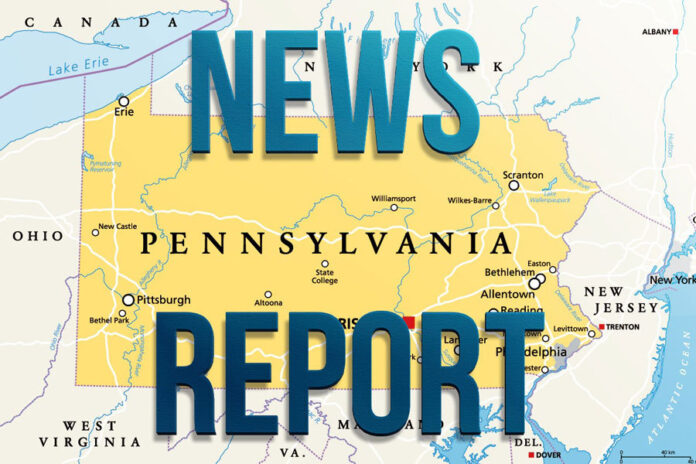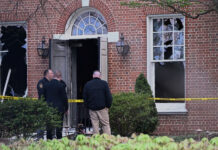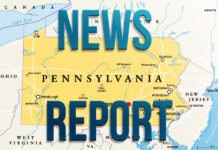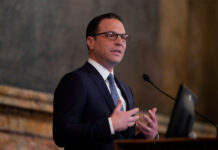Pittsburgh Post-Gazette. September 17, 2023
Editorial: A state budget compromise is possible, if pragmatism can trump ideology
At least part of the Pennsylvania state budget has remained in limbo for over 10 weeks now, pushing well past the June 30th deadline. Schools, universities and the state judicial system are being forced to make hard choices as the ongoing standoff in Harrisburg has frozen all new or expanded programs. At the center are two $100 million allocations that tackle the state’s education woes in dramatically different ways.
Once the State House reconvenes under Democratic control, the House Democrats and Senate Republicans should strike a grown-up compromise that ensures each side gets some of their priorities. Strict adherence to ideological purity, on the other hand, will ensure the standoff drags on for months, while schools, courts and other institutions suffer.
Give and take
The primary budget, known as the General Appropriation Bill, received Gov. Josh Shapiro’s signature in early August. While there had been hope for an on-time June budget, House Democrats balked at the $100 million Pennsylvania Award for Student Success (PASS) school voucher program, favored by Republicans and supported by Mr. Shapiro. To mollify his own party, the governor enraged the other party by vowing to line-item veto the program. In turn, the Senate Republicans left Harrisburg to reorganize, before returning to pass the main budget several weeks later.
While the governor’s signature did release most of the state’s budget, the Fiscal Code bill, which outlines precisely how some $450 million of the funds allocated in the General Appropriations bill should be spent, remains a point of contention. (Another roughly $500 million is likely destined for the state’s so-called Rainy Day Fund.) Without this crucial piece of legislation, new or expanded programs are effectively paralyzed, lacking the essential “code bill language” that instructs how the funds should be used.
In late August, the Republican-led Senate passed its own Fiscal Code bill, which included $100 million for PASS. The House Democrats are waiting to reconvene until their 102-101 majority is restored by the special election for the heavily Democratic 21st House District, vacated by county executive candidate Sara Innamorato, which will take place on Tuesday.
Setting aside the political maneuvering and tit-for-tat exchanges, the consequences of this year’s budget impasse have been mounting.
Programs delayed and money lost
While the biggest debates are over K-12 education funding, other institutions and programs are being hurt by the delay. For instance, at Pennsylvania’s four state-related schools — Pitt, Temple, Penn State and Lincoln University — tuition discounts for in-state students depend on state funding. For Penn State students, a third of the $15,000 in-state discount comes from the state. At Pitt, it’s around half the $16,000 savings. Lawmakers, largely Republican, requested tuition freezes, but by now all the institutions except Lincoln have opted to hike prices for at least some in-state students.
At both the K-12 and post-secondary level, funding delays make it hard to plan for the next fiscal year. Teachers, professors and administrators are in limbo.
The budget impasse is also draining money from the court system. Two surcharges for court filings, totaling $21.25, expired on July 31st. As a result, the courts are losing $850,000 for every week the budget remains unresolved.
Other programs caught in the crossfire are necessary and humane. Among them: $50 million for the popular Whole Home Repairs program, which pays for needed renovations for low-income homeowners; another $100 million for school mental health counselors plus $10 million in stipends for student teachers; $50 million for emergency health care system relief; and a first-ever state appropriation of for indigent criminal defense.
A clear compromise opportunity
At the heart of the budget debate are two $100 million education allocations with fundamentally different approaches to improving Pennsylvania’s K-12 system: the PASS voucher program and Level Up, a two-year-old program designed to funnel money to the commonwealth’s 100 neediest K-12 school districts. While PASS offers lower-income households the opportunity to subsidize a private or charter education, Level Up offers crucial support to districts in need. They are, in essence, dual $100 million bargaining chips.
Mr. Shapiro has indicated that he still does not personally oppose the voucher program, which is specifically aimed at lower-income families and is described by supporters as a creative way to enhance education funding. The next convening of the Senate and the House will not be before Sept. 18 and Sept. 26, respectively.
While PASS and Level Up aren’t the only chips on the table, they are by far the biggest, and they present the most obvious opportunity for compromise. Ideologues and special interests will howl if they don’t get their way — and that’s exactly the problem. A solution is obvious, if only legislative leaders and the governor can cut through the partisan bluster to grasp it: Include some, but not all, funding for both. Democrats should consider some funding for PASS as a pilot program whose effects can be studied. Republicans should consider agreeing to some Level Up funding the cost of doing business in a divided government.
The line-item veto debacle was the first real misstep in Mr. Shapiro’s tenure, when his reputation as a pragmatically progressive dealmaker came into question. Now, he can restore that lost luster by striking a bargain that benefits both sides and Pennsylvania’s children, while getting government moving again.
___
Scranton Times-Tribune. September 17, 2023
Editorial: Trying to make most of Penn’s Woods
People who don’t know Pennsylvania can be forgiven for associating it primarily with its big, vibrant cities of Philadelphia and Pittsburgh. Those areas are indeed economic engines and cultural hubs.
But Penn’s Woods, the state’s vast outdoor resources, still are fundamental to the state’s character, economy and culture. And a solid body of evidence suggests that they are underappreciated, under-marketed and underused.
For example, even though a study commissioned by the Pennsylvania Restaurant and Lodging Association found that tourism supports at least 6.5% of all jobs statewide and generates $43.8 billion a year in state and local taxes, the total state budget for the Pennsylvania Tourism Office is just $9.1 million, less than a third of the $29.8 million that the state budgeted in fiscal 2009.
The study estimated that the state lost $4.48 in state and local tax revenue for every dollar it saved in tourism promotion over that period.
Now the Shapiro administration has taken a modest step toward more aggressively promoting the portion of the state’s tourism draw connected to its natural assets.
The Office of Outdoor Recreation, budgeted at just $422,000 for its inaugural year, will work with state agencies that operate state parks and forests and other recreational assets, and private-sector businesses to develop ways to improve parks, forests and other natural assets, and better promote them to increase visitation.
Already, according to state figures, outdoor recreation generates about $14 billion a year in economic activity statewide. The new office will work with the private and public entities involved in the industry to increase that economic performance and to use it as a catalyst for other sectors of the economy.
The agency will rely on successful operations such as the PA Wilds Center for Entrepreneurship, which helps to drive economic activity in the Pennsylvania Wilds, a wildly remote area of 2.1 million acres across 13 north-central counties that fosters conservation- and recreation-related business development.
The idea behind the new office is to more effectively marshal existing private and state resources to attract more visitors and investment. It’s a worthy exercise to make Penn’s Woods even more valuable.
___
Uniontown Herald-Standard. September 16, 2023
Editorial: Blue laws are obsolete — but had their virtues
Once upon a time, life was pretty quiet in Pennsylvania on Sundays.
This was mostly the result of so-called “blue laws” that prohibited many different types of activity on Sunday so that people could rest and turn their attention to religious observance. The first of the commonwealth’s blue laws was enacted in 1779, and it was said they were designed to prevent “vice and immorality” as well as “unlawful gaming,” and to “restrain disorderly spirits and dissipation.”
It was only in 1978 that the Pennsylvania Supreme Court ruled that most blue laws were unenforceable, and in the decades since, Sundays have become more and more like any other day. In fact, the number of hours many retail establishments remain open on Sundays seems to have expanded in recent years — where most would wait to open their doors until noon, some now do so at 11 a.m. or 10 a.m. A few even welcome customers at 9 a.m.
It’s easy to understand why this has happened. Households with both parents working are pressed for time, and sometimes it’s a necessity to hit the stores on a Sunday. And brick-and-mortar retail establishments now have to compete with the 24/7 bazaar that is the internet. For better or worse, a shrinking number of Americans attend church weekly, and Sundays have been given over to other types of secular activities, such as Pittsburgh Steelers games in this region. It makes no sense to stop people from buying and selling and being part of the marketplace on a Sunday.
One of the few lingering restrictions on Sunday commerce in Pennsylvania is the sale of cars. We are one of just 13 states that don’t allow residents to sign the papers and drive off the lot in a new vehicle on a Sunday. State Sen. Marty Flynn, a Lackawanna Democrat, has proposed the law be taken off the books, according to PennLive. Flynn also believes that the mandate that vehicles be inspected annually should be repealed.
There’s really no rational reason to prevent anyone from buying a vehicle on a Sunday. It might be one of the more convenient times in the week for many people. And if a dealership wishes to remain closed on a Sunday, so that they can give their employees a day off, they should be allowed to make that decision on their own.
No question about it, the ability to shop and carry out other types of transactions on a Sunday has certain advantages. But it’s hard not to feel that something has been lost when there is not a day in the week where the pace of life slows, we set aside the busyness that characterizes much of our lives, and we focus on our own well-being, or that of our friends or family.
Blue laws may be obsolete, in some cases laughably so — no one seriously thinks anyone should be prevented from dribbling a basketball in their driveway on a Sunday anymore, or be stopped from mowing the grass. But those blue laws, and the peace and quiet they enforced, were not without their virtues.
___
Wilkes-Barre Citizens’ Voice. September 18, 2023
Editorial: Expedite wildlife corridors
Dead animals are a sad and common sight along state highways, but the damage isn’t limited to the unfortunate animals that try to cross busy roads.
About 200 people die every year in vehicle collisions with animals on U.S. roads, which also cause hundreds of millions of dollars in vehicle damage.
State Farm Insurance recently reported that Americans filed 1.8 million auto insurance claims, from July 1, 2022 through June 30, to repair damage resulting from animal collisions. Pennsylvania led the nation with 153,397 of those claims. The company also determined that drivers in Pennsylvania have a 1-in-59 chance of colliding with an animal, the third-highest probability in the nation behind West Virginia and Montana.
Collisions also reflect that highways divide animal habitats. That has been a particular problem in some states, especially California, where highway-facilitated sprawl has prevented predators such as mountain lions and bears from traveling across their full ranges. The result has been more encounters between those animals and people in what have become suburban rather than remote areas.
Many states have constructed wildlife corridors over or beneath highways. They entail terrain similar to the surrounding landscape, and natural barriers on both sides of the highway to funnel animals to the corridor. Camera traps in those corridors regularly capture a remarkably dense and diverse parade of animals safely crossing busy highways.
END







